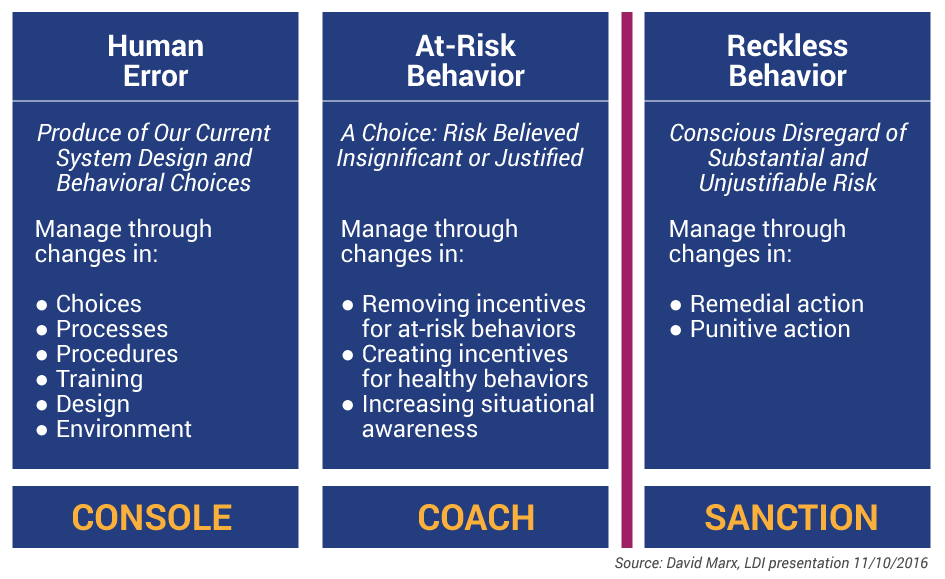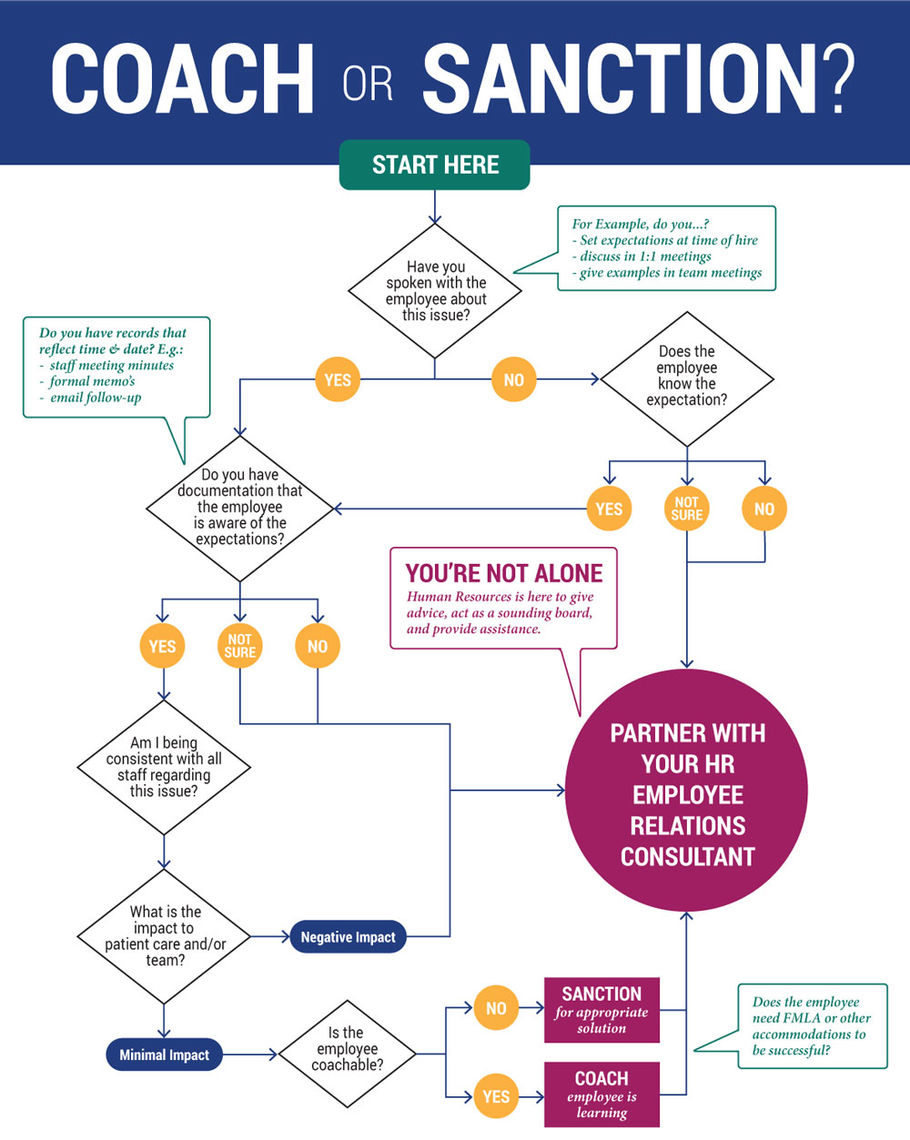goal for myself as well as my team is to help leaders create environments where employees can be successful, and the organization can be successful. In the HR world, we talk a lot about clear expectations and documented warnings. It can feel far from process improvement and patient safety, but David Marx’s model for integrating engagement with accountability revealed the intersection.
As a healthcare system, we are charged with a precious mission—patient’s health and safety. What could be more important? Using the console - coach - sanction model, we can foster an environment that provides employees a safe voice while balancing individual accountability.

All three parts of the model are equally important, and are interdependent on one another in creating a successful environment.
CONSOLE – Mistakes happen, Review Process
When we examine our processes whether it be at the bedside, support services, or in the IT department, we have to be okay with knowing that perfection is not going to happen. Acknowledging that mistakes happen can lead to designing systematic approaches to reduce human errors. We can give employees a voice by welcoming their solutions to systematic errors. It is crucial that if we start to see patterns developing that we not “blame” the employee, but rather, find the root cause of the issue and implement ways to resolve it.
COACH vs. SANCTION – distinguishing between the two
Engagement starts with leader intent. Even with your best intentions, sometimes you run into a situation where a team member chooses to detour from the well-designed system. It is at this crossroad, that as the leader, you need to decide - is this a coaching moment or a sanction moment?
It is a fine line between knowing when to coach or when to sanction. In an attempt to find clarity, I have found that you can ask yourself 5 simple questions to help kick start the process.

Click to download "Coach or Sanction" flow chart.
Let’s see how the questions relate to coaching or sanctioning.
An example: You have implemented a new bedside report structure to ensure that a patient understands and is part of their care plan at shift change. An employee decides to not participate and stays in the hall. They have made comments that they find it a burdensome and inefficient to spend the extra time at the bedside at the end of a long shift.
As a leader, you can now utilize the five questions to help determine next steps.
| 5 Questions | Coach | Sanction |
|---|---|---|
| 1. Have I spoken to the employee about this issue, or has the employee been educated on the issue? | Not directly, meeting with this new employee later this week to go over orientation, expectations, check-in. | Discussed during orientation and in the last staff meeting. Spoke about it in our one on one meeting and I explained the importance and value of this process to both the patient and the team. |
| 2. Do I have good documentation that the employee is aware of the expectations? | Employee has attended new employee orientation. | Employee attended staff meeting where we reiterated the importance of the process. Have the minutes from the meeting. |
| 3. Am I being consistent with all staff regarding this concern? | Meet with employees to discuss concerns and allow opportunity to be successful, before moving to next steps. | Held previous employees with knowledge accountable with formal action. |
| 4. What is the impact to patient care and safety, or impact to the team? | Meet with employees to discuss concerns and allow opportunity to be successful, before moving to next steps. | By not participating, impacts quality of care to patient etc. |
| 5. Is this employee coachable? Are there other factors that may be causing these situations? | Very eager to be successful. Came from a different organization, learning our practices. | Great clinically, need to help get on board with team. |
The middle responses indicate that this may be a new employee, and it will be good to set the tone of the unit and help the employee understand the importance behind the process. The last column sounds like the employee has made a conscious decision to disregard the system and appropriate coaching. This situation is a great time to partner with Human Resources and review the Sanction part of the model. If the leader were to ignore or not implement the sanction pillar, the rest of the team and patients could be negatively impacted.
As a leader, you want to give the employee the ability to be successful. If you are ever in doubt or on the fence, I encourage you to partner with your HR team - they may be able to provide insight and a sounding board.
This article was originally published January 2017.
Sarah Sherer
We all make lots of mistakes early on in our careers. Hospitalist and mentorship expert Valerie Vaughn sets us up for success by sharing her expertise on how to take control of your long-term career path.
Learning to listen is not only a leadership skill—it’s a life skill. Leadership training specialist Jess Burgett shares three practical tips for harnessing the power of listening with intent.
Our work has high stakes, and it’s natural we feel a deep sense of responsibility. Ally Tanner teaches us that trust helps lighten the load.
